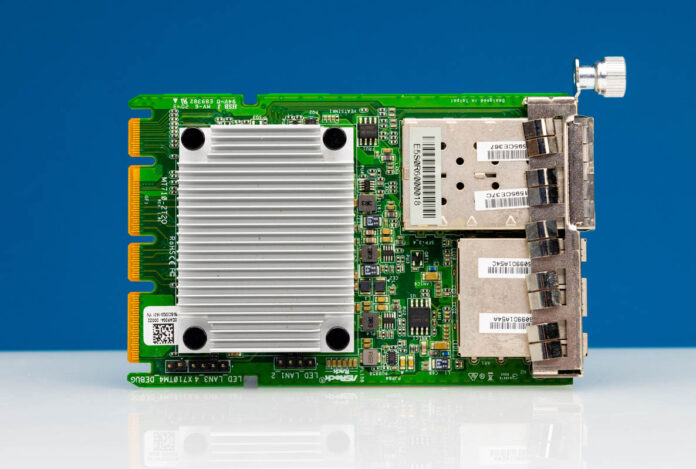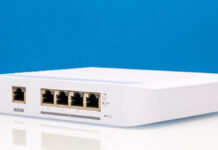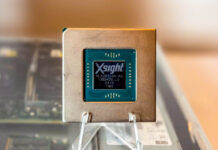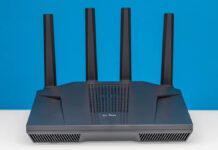This is perhaps one of the more fun cards we have reviewed recently. The ASRock Rack MT710-2T2O is a very different OCP NIC 3.0 form factor card. While many OCP NIC 3.0 cards have a single type of interface, this has two types of 10G interfaces. With SFP+ and 10Gbase-T, it is just different.
ASRock Rack MT710-2T2O OCP NIC 3.0 Review
Here is a quick look at the port side of the module. One can see the two 10Gbase-T ports along with the two SFP+ ports.
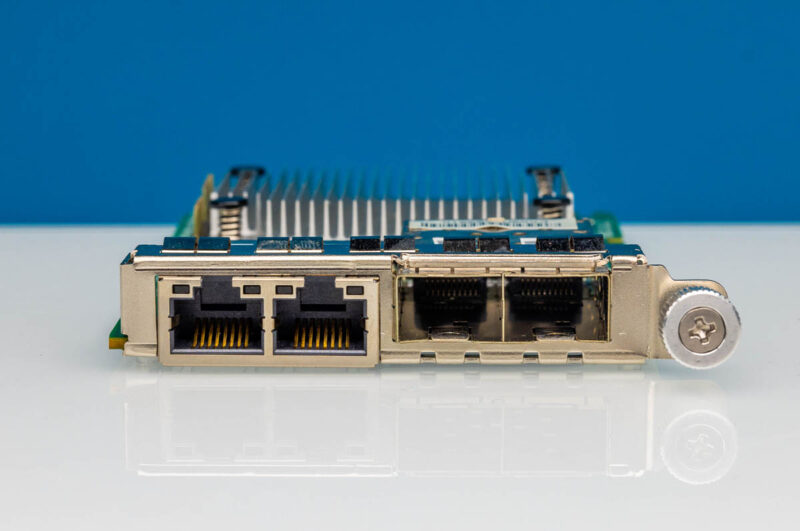
One can also see that this uses an OCP NIC 3.0 SFF form factor with pull tab. This is generally the form factor we prefer because it is the easiest to service.
The NIC is based on the Intel X710-TM4 chip. The Fortville line of NICs has been around for a long time. We first looked at the 40GbE Intel Fortville XL710 almost a decade ago. Since then, the NIC went through an early lifecycle re-spin and has had a number of different iterations. One of the best parts, however, is that the driver support is generally very good.
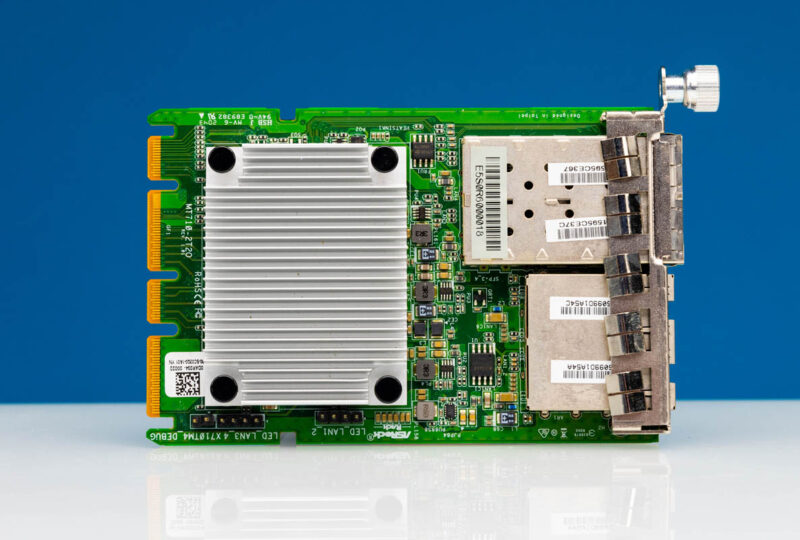
Here, we can see the OCP connector. The heatsink is fairly large, but compared to many other OCP NIC 3.0 cards, it is relatively lower power at just under 10W. With the larger heatsink this can stay cool even in lower airflow server designs.
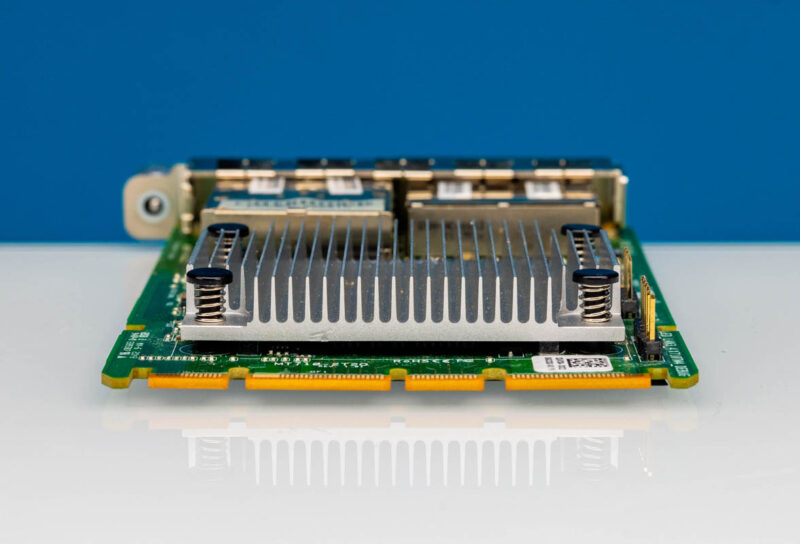
The card is also a PCIe Gen3 x8. This is a lower-speed NIC. The next OCP NIC 3.0 card we look at is going to be a 200GbE unit.
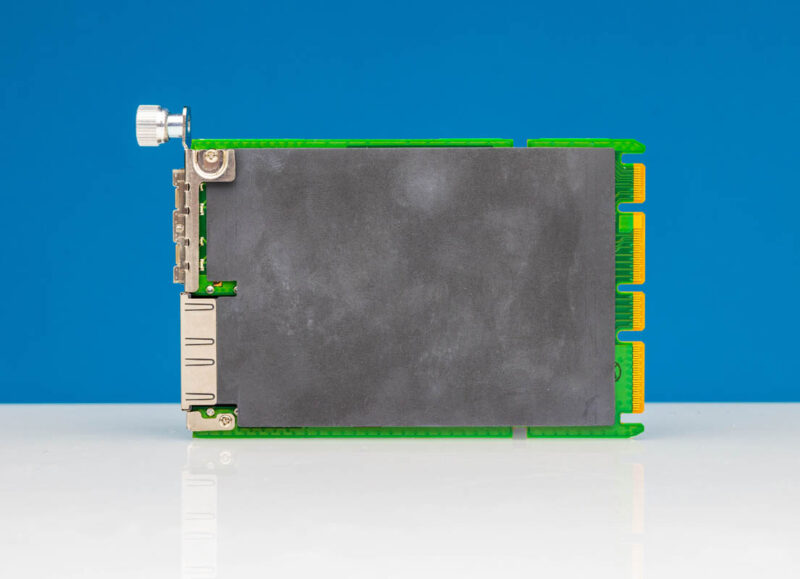
There is just an insulator on the bottom of the card to protect it.
Performance
In terms of performance, the ASRock Rack MT710-2T2O is fairly normal compared to what we see from an Intel X710-based NIC.
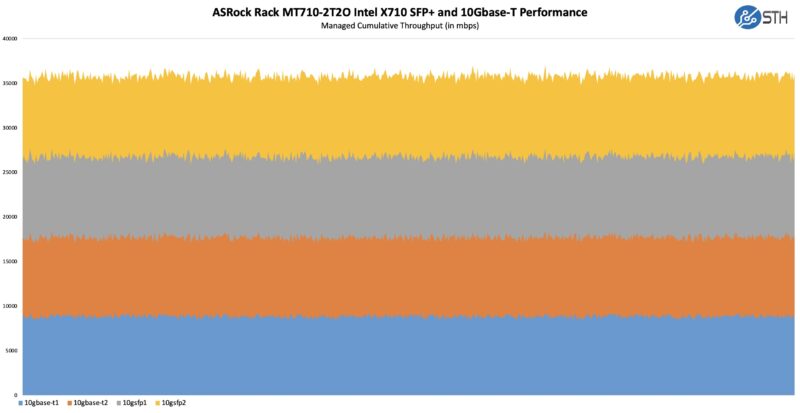
We did get slightly higher average performance from the SFP+ ports than the 10Gbase-T ports, but both were relatively close on average.
ASRock Rack MT710-2T2O Installed
Just taking a quick look at one of these installed, we managed to get it working without issue on a few different platforms, not just ones from ASRock Rack. We will note that it did not work in a Supermicro system we tried, but we are still investigating why that is the case. Here the card is installed even in a Tyan AMD EPYC platform running Proxmox VE 8.2.2:
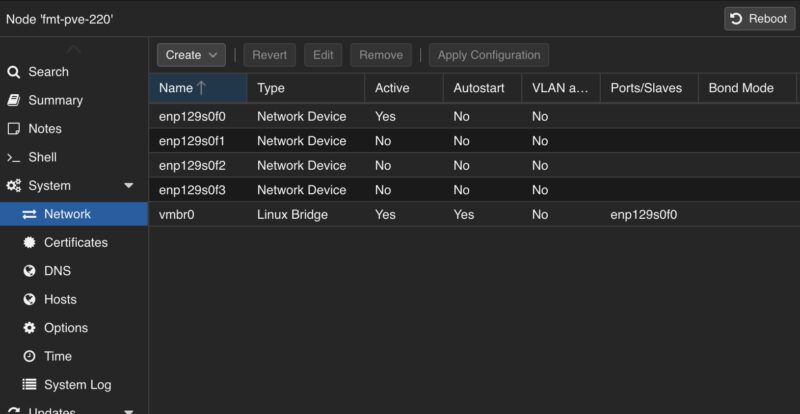
The interfaces show up immediately. We can also see the four interfaces on the PCIe bus in the topology diagram:

The Intel X710 is a fairly well-known NIC that uses the Intel i40e driver. Here is a quick lspci output of both the 10Gbase-T and SFP+ ports on the card:
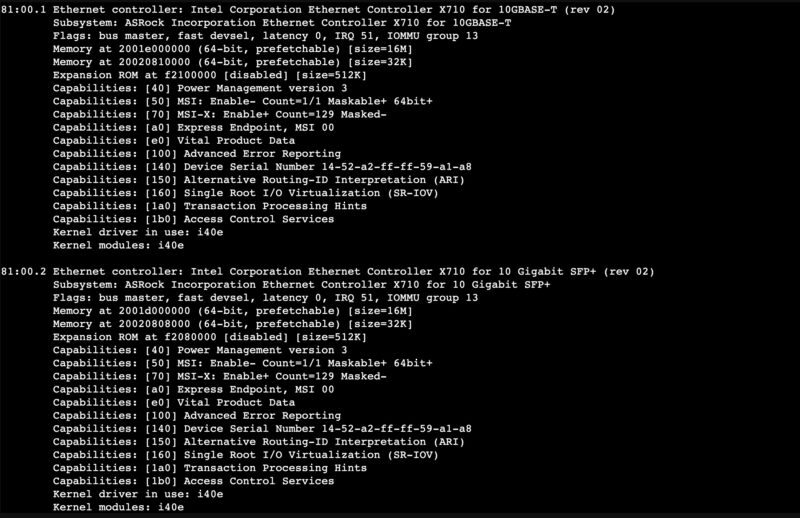
Here is a lshw of one of the 10Gbase-T ports. Overall, this is a very standard NIC.

ASRock Rack says the card has a 9.8W power rating.
Final Words
A few weeks ago, we needed both SFP+ and 10Gbase-T for a few servers we were deploying (with the AMD EPYC 7C13) that only had a single OCP NIC 3.0 expansion slot, so we purchased these. We found that these cards can range wildly in price from relatively inexpensive to quite expensive for the speed. At one point, we paid around $180 for them, only to see online prices spike to around three times that price the following week.
OCP NIC 3.0 has become widely adopted in the industry. If you need both 10GbE interfaces, SFP+ and 10GBase-T, then something like this ASRock Rack MT710-2T2O can be a useful option.

